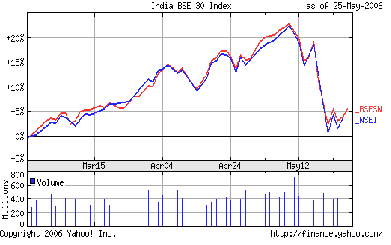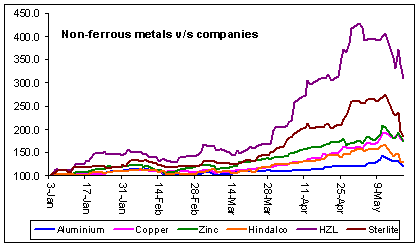I recently came across this nice (book review) article on "Problems of growth stock investing" on capitalideasonline. The book under review was Hedge Hogging by Barton Biggs.
Here's an excerpt -
Growth stock believers argue that you want to own stock in companies whose earnings and dividends are consistently increasing. What you pay for the shares of these companies is important, but not as crucial as correctly identifying true growth companies. By definition, these companies tend to have excellent managements, proprietary positions in businesses that are not particularly cyclically sensitive, and to be highly profitable.
Ideally, growth stock investors want to hold shares in great businesses, and they sell only when the business itself falters, not because the price of the shares has risen. Academics have proved that if you had perfect foresight and bought shares of the companies with the fastest earnings growth, regardless of valuations, over the long run you would outperform the S&P 500 by 11 percentage points a year, which is an immense amount.
The problem is that no one has perfect foresight. In fact we are all generally overconfident and overoptimistic about our skill in picking growth companies. Identifying growth ex ante is extremely difficult, and as noted previously, growth companies have, for one reason or another, a high propensity to fall from grace, in other words, to stop being growth companies. By the time you the investor can clearly identify a stock as a growth stock, it usually will already be valued accordingly. Therefore, you end up buying the expensive stocks of good companies.
--
A compelling argument for sure. After all how many of us would have invested in Pantaloon Retail India between 1992-2002 during which the company's mcap was less than Rs.30 crore. Fast forward to 2006, and its trading at a mcap of Rs.5,100 crore. I think the same holds true for IT stocks in mid-nineties or the breweries industry in all of last one and a half decade of stocks investing in India. Ofcourse, there would be an odd investor(s) who would have hit gold by investing such stocks. But, those are clearly the "outliers" in the whole galaxy of investors. So what should one do to hit one such gold mine over one's lifetime ? My personal opinion (greatly influenced by WB and BG) is as follows:
1. Identify good and sustainable businesses (ones whose products do not run the risk of vanishing like the pagers, type-writers, etc.)
2. Reasonably good management with some kind of track record.
3. Buy these companies when they are reasonably unknown, thereby buying them at cheap rates more often than not.
4. Last but the most important, hold them all for a life time.
Not all companies selected by the method above will turn into multi-baggers, but even if one does, returns on one's entire portfolio are likely to be fairly good. If 3-4 stocks turn multi-baggers, then well (!), one should contemplate writing yet another "How to Make Money by Investing in Stocks" and make even more money ;-)





